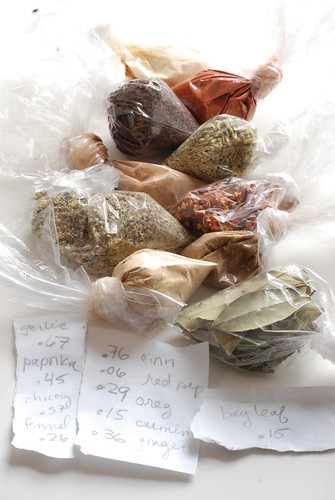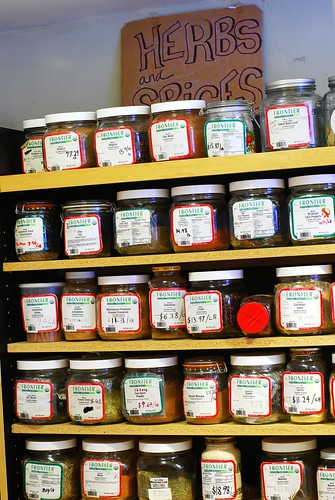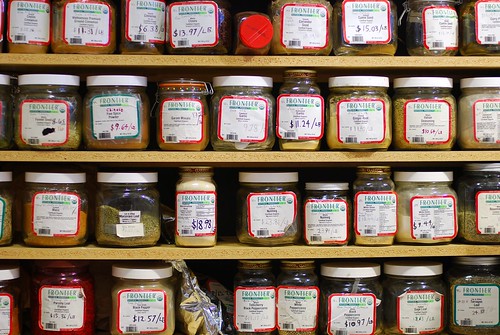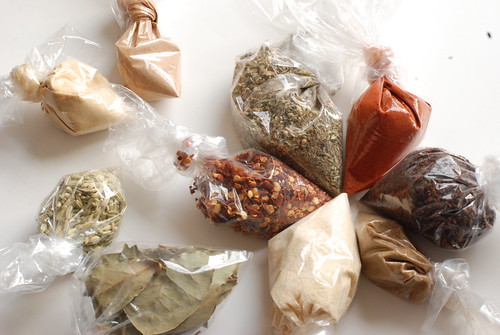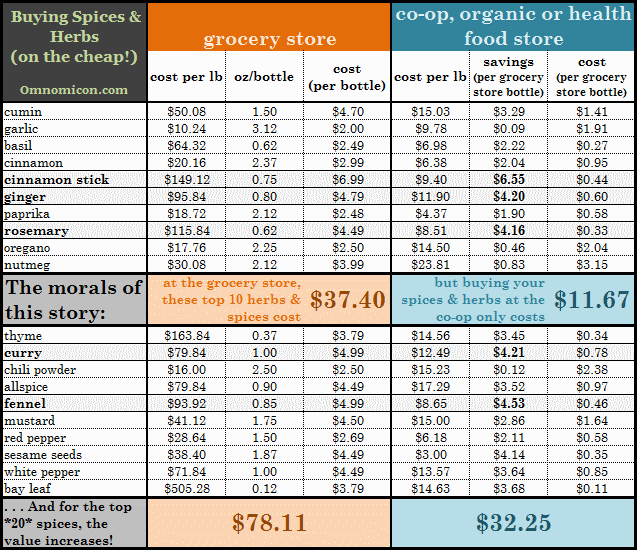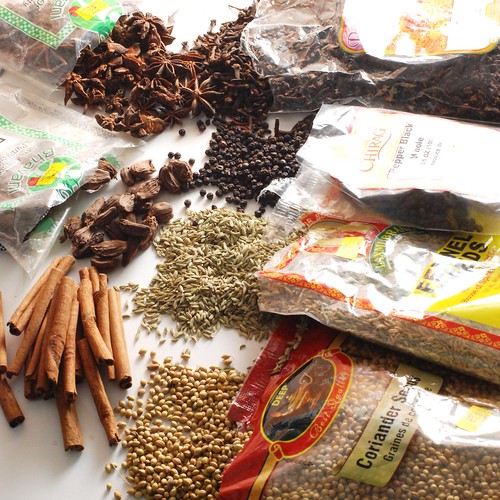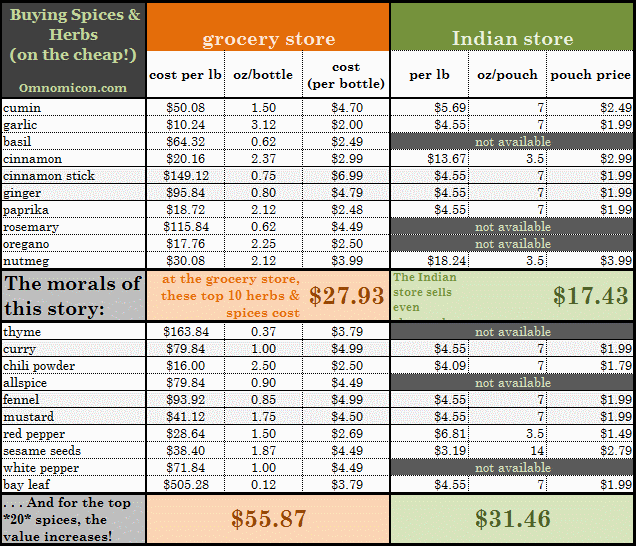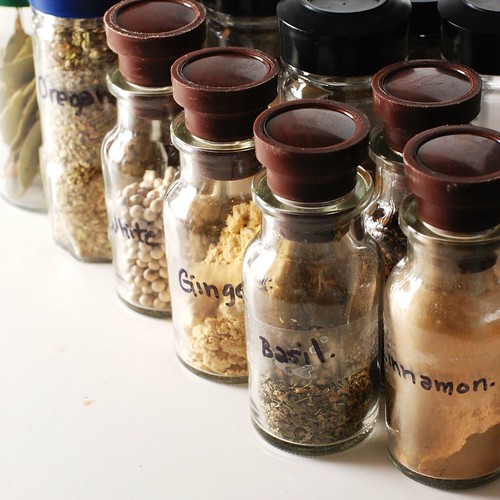Thanks to everyone who sent me Google’s cached version of my post . . . unfortunately that was what I had started with two hours prior, sans recipe, not deleted altogether, but without all the hard work of the night. I’ve been learning to click save more frequently for ten years now and, apparently, will never learn. So anyway, here’s my revised all-the-better rendition of Coffee Nut Chicken.
Remember that time I posted that thing about how to score herbs & spices on the cheap? And then when I said I had a good recipe to use them all? This is that recipe, guys! Despite the word “chicken” in the title, this is easily modified to vegetarian or vegan tastes. Easily.
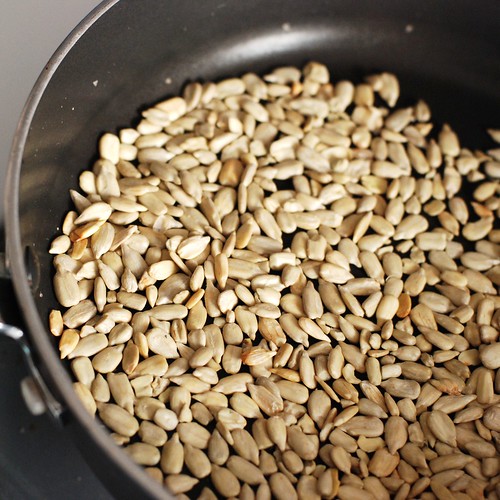
The original recipe comes from Chef Paul Prudhomme’s out-of-print cookbook classic Fiery Foods That I Love , and the recipe is also available on Chef Paul’s website. I changed a few things to obviate the need for Chef Paul’s magical seasonings blends because any food with “magic” in the title is suspect to me.
, and the recipe is also available on Chef Paul’s website. I changed a few things to obviate the need for Chef Paul’s magical seasonings blends because any food with “magic” in the title is suspect to me.
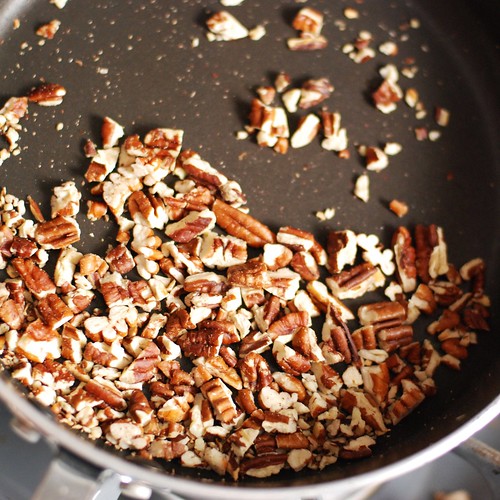
Not sure if this has come up yet, but Dano is my boyfriend. I hate the phrase “my boyfriend,” because every time I use it I feel like staking out some man-meat territory. To me, it sounds like “mah buh-FRAAAND.” So now that we’re real close friends, you’ll just have to keep track of his name like all my other pals. Internet: Dano. Dano: Internet.

Anyway, I bring this up because Coffee Nut Chicken was the very first meal he ever made for me! *Awwww!* Turns out Dano can cook too, when I let him!
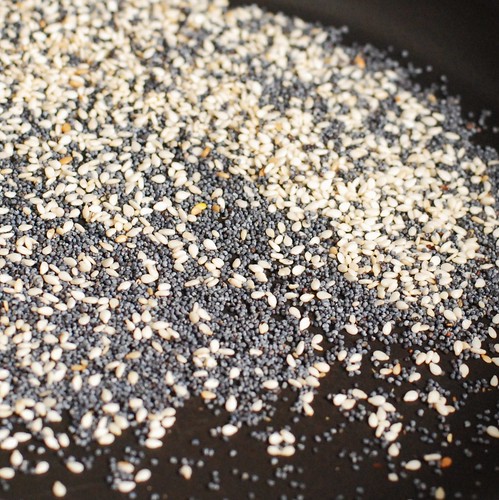
There are a metric shit-ton of ingredients in this recipe, so a little mis en place might be a good idea.

The puree is . . . um . . . not that pretty. But remember how there were all those delicious toasted nuts and seeds in there when someone inevitably describes it in less-than-appetizing terms.
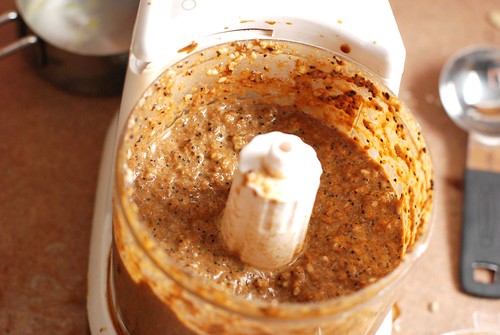
As promised, we begin with a herbs and spices do come into play. Specifically, an 8-spice blend if you don’t count salt. There are so many ingredients involved that this recipe presents some problems with some easy solutions. On the one hand you probably are missing at least *one* of the ingredients on the list. On the other, because there are so many flavours in play, your improvised substitution won’t ruin dinner.

It doesn’t matter what kind of chicken you use. Bone-in, whole chicken, skinned, some chicken thighs, breasts . . . you know, whatever. The original calls for a whole chicken, but I tend toward chicken thighs, so that’s what’s pictured here.
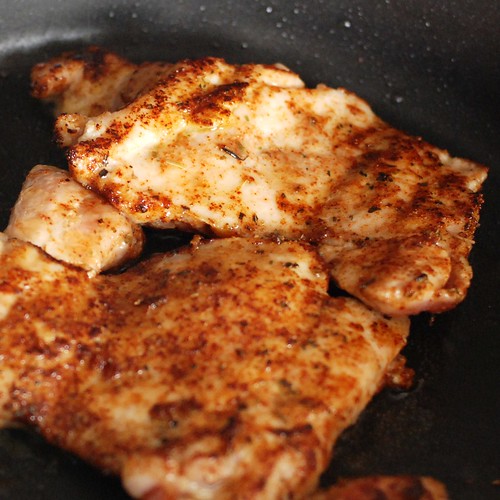
Onions, naturally.
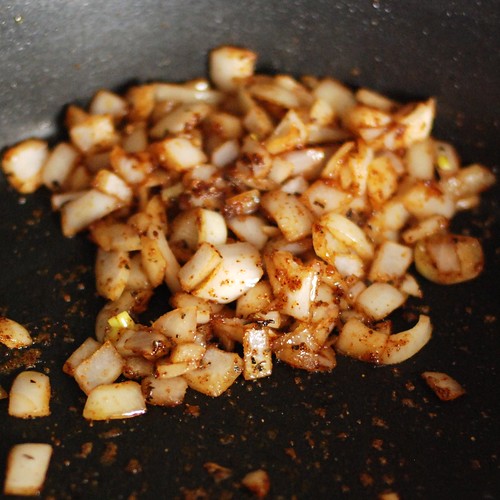
Simma!
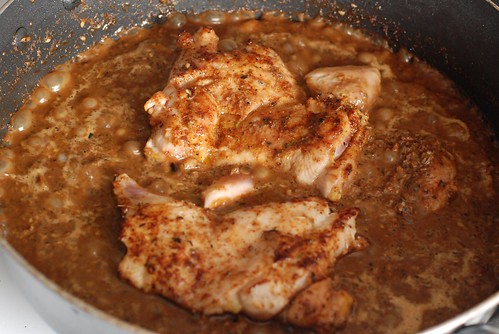
And then serve. Please remember all the hard work that went into this dish, because without that knowledge, this is probably the last thing you’d think you’d want to put in your mouth. Remember, it’s nutty and warm and savoury with an interesting heat that comes on just as you think you’re in the clear with spiciness. And it’s positively divine on egg noodles.

Vegetarian? Oh that’s cool, it’s easy to fix. Make the sauce with a veggie stock, and instead of chicken, simmer some whole portobello mushrooms, or other sliced mushrooms in the sauce (no need to sear!). Serve over egg noodles, or for vegan types, rice. I had egg noodles on hand, so unfortunately that’s the picture you get, but I hear vegans have excellent imaginations.

Coffee Nut Chicken
modified from a recipe by Paul Prudhomme
A very important note:
Please do not try to substitute ground coffee for instant, which is not at all the same thing. Just put aside your foodie-snobbery, suck it up, and accept that sometimes freeze-dried is what’s called for. Dano made this mistake exactly once. We had pizza that night. Other than that, substitutions work well here.
Seasoning
2 tbsp lightly packed brown sugar
2 tsp dried ancho chili powder
2 tsp chipotle chili powder
(if you have no interest in fancy chili powders, substitute 1 tbsp + 1 tsp total chili powders for the
ancho and chipotle)
2 tsp salt
1.5 tsp cumin
1.5 tsp garlic powder
1.5 tsp onion powder
1.5 tsp oregano
1 tsp basil
1/2 tsp ground cloves
The Coffee and Nuts (and what they are pureed with)
1/2 c sunflower seeds
2 c chopped pecans
2 tbsp poppy seeds
2 tbsp sesame seeds
1 cup chicken stock or broth
2 tbsp lightly packed brown sugar
3 tbsp instant coffee
1 tsp ground chicory (hard to find at regular grocery stores and therefore optional)
Other stuff
6 chicken thighs (or 3 chicken breasts halved, we’re shooting for about 1.5 lbs of meat)
2 tbsp canola, sunflower or other high-heat oil (olive oil will burn)
1 onion, chopped
1 cup chicken stock or broth
8 oz egg noodles
Mix the seasoning spices by giving them a little pinchy-pinch. Rub about 2 tbsp of the seasoning into chicken. Set aside.
Heat a large skillet to medium. Toast the sunflower seeds then the chopped pecans 5-6 minutes each, shaking the pan as they toast. Toast the poppy and sesame seeds together for 2 minutes in the same manner.
Puree the sunflower seeds, pecans, poppy and sesame seeds with 1 c chicken stock, 2 tbsp brown sugar, instant coffee and chicory in a food processor about 1 minute.
Heat the oil in the nut-skillet on high until it moves easily. Sear each side of the chicken 2 minutes, then set aside; lower heat to medium. Add 1 tbsp of the spice mixture to the pan with the chopped onion and sautee 5 minutes or until cooked. Stir in 1 cup chicken stock or broth, scraping the bottom of the pan to release the brown bits. Bring to a boil, add chicken, nut puree and spice mix, then reduce to low and simmer for another 25 minutes, or until chicken reaches an internal temperature of 160o. If you want to make the chicken cook more quickly (but with the risk of having an extra-liquidy meal), cover and cook til the internal temperature is reached.
Now’s a good time to boil water and cook the egg noodles.
By request: finally, a vegetarian option!
I mentioned this earlier, but it bears repeating. Word-for-word, in fact, just to conserve my precious creativity: Make the sauce with a veggie stock, and instead of chicken, simmer 6 whole portobello mushrooms, or other 24 oz sliced mushrooms in the sauce (no need to sear!). Serve over egg noodles, or for vegan types, rice.
Nutrition Summary (one of six servings, using 1.5 lb chicken breast, No Yolks egg noodles): 555 calories, 6g fiber, 22g fat (but lots of the good kind, hehe); 12 weight watchers points
(using 6 portobello caps, No Yolks egg noodles): 475 calories, 8g fiber, 21g fat; 10 ww points




